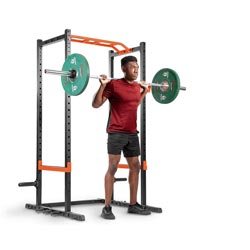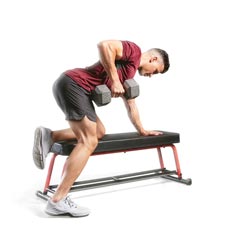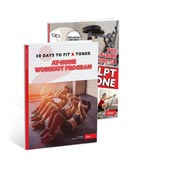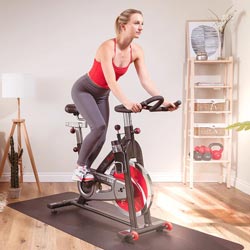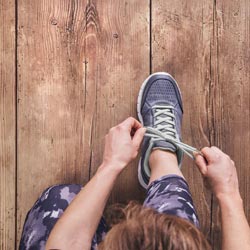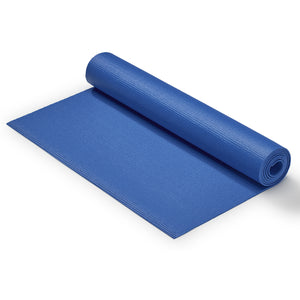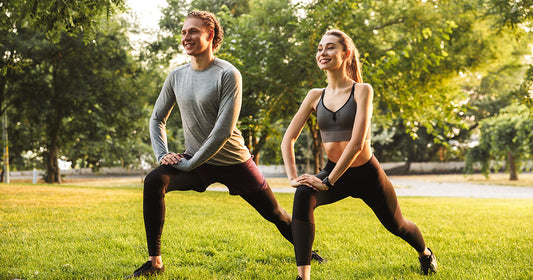Think of the feeling you have when your car's check engine light turns on. What steps do you take to ensure your car's health is running in tip-top shape? You probably bring it to an auto shop soon after the check engine light turns on and pay the repair fee.
Now compare your reaction and following actions when you experience physical aches and pains in your body. For example, I am not talking about a broken arm or a rolled ankle, but rather your back bothers you after a long day at work daily, or when you lift something over your head, your shoulder has a pain.
This pain we feel during routine tasks is similar to our car's check engine light; it alerts us that something is a little off within our skeletal system. However, I find we are much more likely to ignore our body's check engine light than our cars.
This article will teach you how to add a mobility routine to your workout training to help manage and reduce your aches and pains.
What your daily routine pain is trying to tell you
Pain acts as your body's alarm system. Similar to your check engine light on your car, it alerts you that something is off. It may be minor, or it may be something more substantial.
Now I am not here to diagnose pain but rather to help bring awareness and draw connections with what may be occurring in your body. If you experience pain regularly in a particular part of your body, it is crucial not to ignore this alarm and seek professional help!
Why mobility workout routine is important
Mobility is defined as the ability of a joint to move freely under control through its full range of motion. Mobility differs from flexibility, however, which is a muscles' ability to lengthen.
An excellent example of adequate mobility is performing a squat without pain and with ease compared to having good flexibility in the muscles utilized in a squat, such as your hip flexors, hamstrings, glutes, quads, and calves.
Moving the body freely and without pain is what we strive for working with clients as fitness professionals.
How adding mobility workouts can help reducing pain
The human body and its skeletal muscle work incredibly efficiently and are made to move. Proper alignment of our skeletal system is controlled by muscle and its supporting structures (fascia, ligaments, tendons). As we age, our habits, lifestyle, and injuries slowly change how our muscles grow and adapt.
Our body responds to the demands we place on them, and by performing specific actions or movements more than others, we can end up with imbalances. These imbalances look like tight or strong muscles in certain parts of our body or loose and weak muscles in others.
Now mobility movements are not the miracle "fix it" solution for all musculoskeletal pain but are a step in the right direction to addressing any imbalances or deficits in your body.
How to add mobility exercises into your next workout
There are two great ways to add mobility practice to your next workout.
- Start your workout with this 10-minute mobility sequence. In this video, there are ten exercises. Perform each movement for 60 seconds (30s per side when applicable). This sequence is the perfect warm-up to any exercise.
- Start or end your day with this same 10-minute sequence.
- Choose 2-4 movements and add them in during your rest breaks. Adding mobility movements during your workout when you are recovering is a great way to rest while adding beneficial movement.
- You will leave your workout feeling even better because of the increased mobility.
10 Best Mobility Training Exercises in Your Workout Routine
1) Cat/Cow
Cat/cow is a great movement to start your day or workout. This complete back stretch moves between spinal flexion and extension in all three spine segments.
2) T-spine Rotations (rotate the hand to ceiling into thread the needle)
Unlock your upper back by rotating 180 degrees to add movement through the thoracic spine. T-Spine rotations from kneeling help start loosening up the hips as well with every rotation. Thinking breath to movement is crucial to allow the muscles to let go.
3) Inchworms
Decrease muscle tension in the hamstrings by adding this compound stretch. This movement dynamically stretches the hamstrings through a hip hinge.
By then walking out into a high plank, core muscle activation will allow the stretch receptors in the posterior chain to relax, allowing an even deeper stretch. Progress this movement as you grow more mobile and strong with a pushup or a plank hold.
4) Worlds Greatest Stretch w/ Rotation
The world's greatest stretch is suitably named. This one movement stretches all the major muscle groups in the entire body. Suited for any fitness level, this movement can be adjusted to target any tight areas.
Then, add a t-spine rotation to stretch further and quickly feel the difference in your body.
5) Worlds Greatest Stretch into a Hamstring Stretch Hold
Another reason why this posture is called the world's greatest stretch is because additional positions can be held. Hit all three hamstring muscles exactly where you need some love. Position your knee accordingly to change the stretch focus to fit your needs.
6) Figure 4/Pigeon
Externally rotate the hip and feel a stretch sensation like no other. This movement meets you where your flexibility currently is. Adding length in these deep hip muscles help reduce back pain by releasing tension.
7) Half-Kneeling Hip Flexor w/ Overhead 1-Arm Reach
Combat the harmful effects of sitting by lengthening and engaging your hip flexor and glute muscle. Contracting the glute muscles of the kneeling leg help relax the hip flexor muscles on the front of your body.
8) Kneeling Adductor Stretch/Rocks
Send some love to the adductor muscles in the groin by gently rocking in and out of this deep stretch. Careful not to stretch too deep at first as you explore what part of the muscles need mobility. This often-overlooked stretch may be what you need to reduce knee and back pain.
9) Supine Overhead Arm Reach/Lowers
Get moving at the shoulder and engage the mid-back muscles. Bringing our arms overhead helps maintain this vital movement and combat shoulder pain. Like the Inchworm, the shoulder joint will move more freely by contracting the core and mid to upper back muscles.
10) Side-Lying T-Spine Rotations
The side-lying rotation helps open up the entire upper body. For example, by bringing your knees into your chest, your low back remains stable and still and allows the movement to come from the thoracic spine.
Linking breath to movement each rep will enable you to rotate a little further each time. Feel the stretch additionally in your shoulder, chest, and even bicep.


